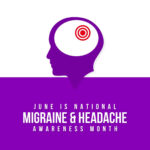Cataract Awareness Month is celebrated in June. The awareness campaign promotes information about the eye condition that is the leading cause of blindness in the U.S. While this is a scary fact, fret not because cataracts are treatable with a simple surgery procedure, which has a 95% success rate. This common eye condition mostly affects people over 40, but newborns can also suffer from cataracts either due to complications during pregnancy or the mother contracting diseases like German measles and chickenpox. The causes for cataracts in people above the age of 40 can range from diabetes, long-term eye diseases, and eye injury/inflammation, to factors like intense heat, hereditary influences, smoking, intake of certain oral steroids, and so forth.
History of Cataract Awareness Month
Cataract Awareness Month was pioneered by the organization Prevent Blindness. It was established in 1908 when a community of doctors realized that 30% of cases of blindness in children were highly preventable or treatable, but no actions were being taken. Prevent Blindness, a trailblazer in the eye-care industry, went on to spearhead and get many legislations approved that would aid in preventing eye diseases in infants and age-related vision problems in adults. The U.S. Centers for Disease Control and Prevention (CDC) estimates that around 30 million Americans suffer from cataracts. This figure is projected to grow to 39 million by 2032. This is alarming because cataracts are highly treatable, yet people continue to suffer through them due to a lack of knowledge.
Cataracts are an eye condition where the lens of one or both eyes becomes covered with cloudy areas. This impedes vision because the light entering your eyes is prevented from being bent by the lens of your eye due to the cloudy film covering it. Symptoms of cataracts include seeing halos around lights, faded colors, blurry vision, and trouble in driving, reading, or doing other tasks. Many people also suffer from depression and anxiety due to the stress they are facing because of their failing eyesight. The most successful treatment for cataracts is surgery whereby the doctors remove the damaged lens and replace it with an artificial one. You can also prevent cataracts by regularly getting your eyes checked.
Cataract Awareness Month timeline
Cataracts and their treatments are mentioned in the medical treatise “De Medicinae.”
Muhammad ibn Zakariya al-Razi describes the bronze oral suction method for cataract extraction, attributing the treatment to a second-century Greek physician.
French surgeon Jacques Daviel performs the first cataract extraction surgery with a 50% success rate.
Prevent Blindness and its associates release training programs related to adult vision and photo screening.
Cataract Awareness Month FAQs
What month is Cataract Awareness Month?
June is Cataract Awareness Month. Along the same lines of spreading awareness about eye health, May is Healthy Vision Month.
When should cataract surgery be avoided?
Your doctor can inform you when it is best to avoid cataract surgery. For instance, your doctor might not perform cataract surgery on you if you have a detached retina or advanced macular degeneration.
At what age do cataracts usually develop?
A cataract often develops slowly over time, starting after the age of 40. However, severe vision impairment doesn’t usually happen until 60 or above.
How To Observe Cataract Awareness Month
Find out about cataracts
Learn about the different causes and treatments of cataracts. You can also research preventative measures related to this eye condition because, after all, as they say, prevention is better than cure.
Participate in cataract-related events
Many talk shows, charity runs, and poster exhibitions related to cataracts give a significant amount of information about the disease. You can participate and engage in them to increase awareness about it so that more and more people talk about it.
Donate to organizations
People suffering from cataracts in developing countries have a lot to lose if they receive no treatment. One family member with a cataract can lead to the whole family sinking into poverty if the afflicted family member happens to be the sole breadwinner. Consider donating to organizations that help with treatments in developing countries. If you cannot donate, spread the word about these organizations.
5 Facts About Eyes That Will Blow Your Mind
Four million blinks a year
The human eyes blink a total of 4,200,000 times every year.
Brown eyes are blue
The wonders of science show that brown eyes are actually blue from underneath.
Seeing in light and dark
Your eyes have 7 million cone cells that help you see colors while the 100 million rod cells help with seeing in the dark.
Babies don’t have tears
Newborn babies do not produce any tears when they cry for the first six weeks of their lives.
Jelly-like liquid to keep eyes healthy
Your eyes are filled with a jelly-like fluid called vitreous humor, which is necessary to keep your eyes healthy and functioning.
Why We Love Cataract Awareness Month
It’s a celebration of sight
The ability to see the world clearly and in all its glory is something we shouldn’t take for granted. Millions upon millions of cells perform complex operations in our eyes to allow us the gift of sight. We should take care of it and appreciate our glorious vision for what it is.
It’s a celebration of science
Science has not only explained to us how intricately our eyes can work, but it has also revealed to us the many ways we can repair and treat them in case things go south. Medical advancements have ensured that about 80% of all eye diseases are treatable and can be prevented. The only condition being we take the necessary steps to appreciate and care for them.
It’s a celebration of hope
There’s always light at the end of the tunnel. Everything might seem dark now, but soon things will start changing for the better. We can keep hope alive by continuing to educate ourselves and others. The more awareness there is around cataracts, the more hope can be spread.
Cataract Awareness Month dates
| Year | Date | Day |
|---|---|---|
| 2026 | June 1 | Monday |
| 2027 | June 1 | Tuesday |
| 2028 | June 1 | Thursday |
| 2029 | June 1 | Friday |
| 2030 | June 1 | Saturday |




















































































































